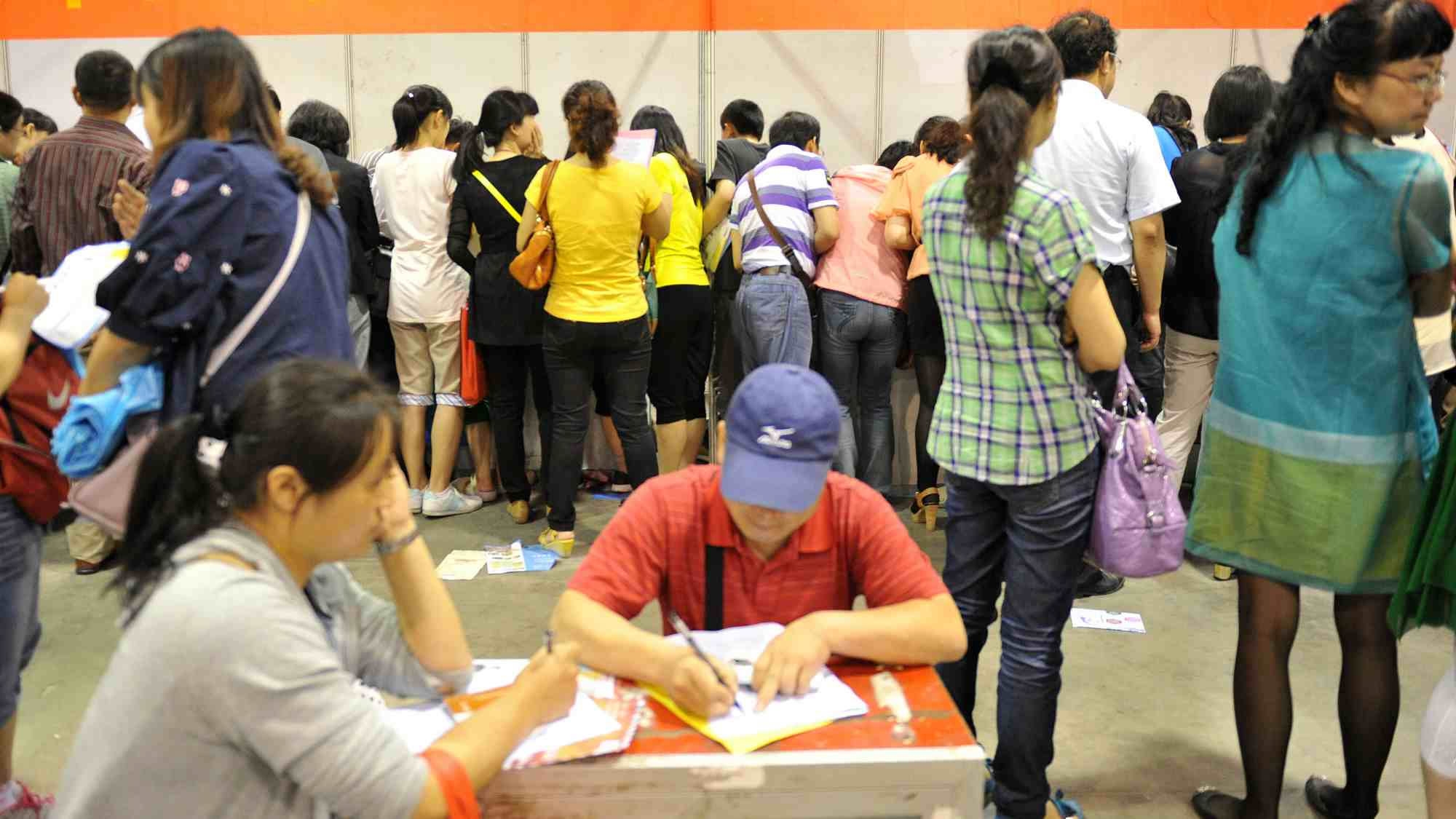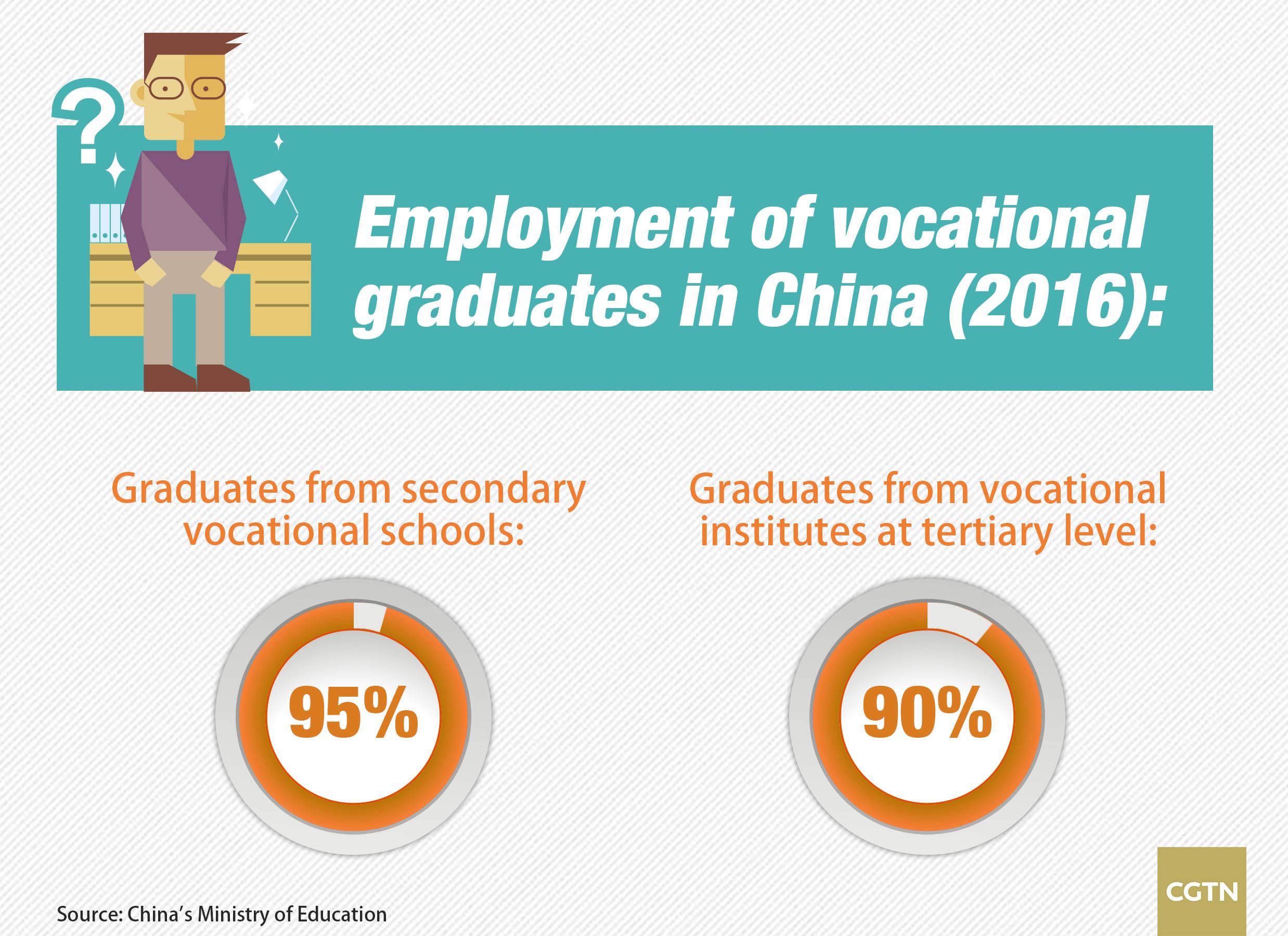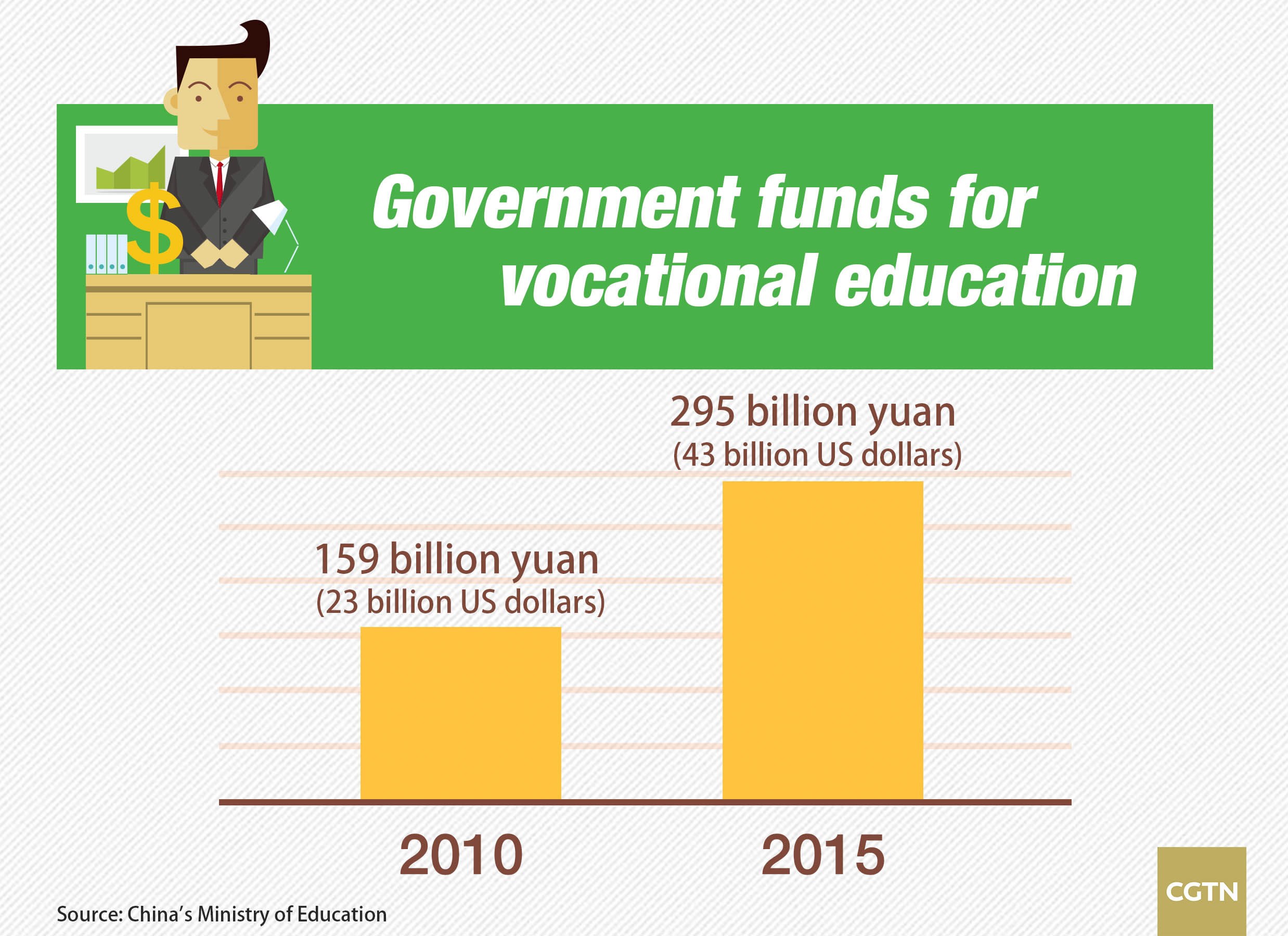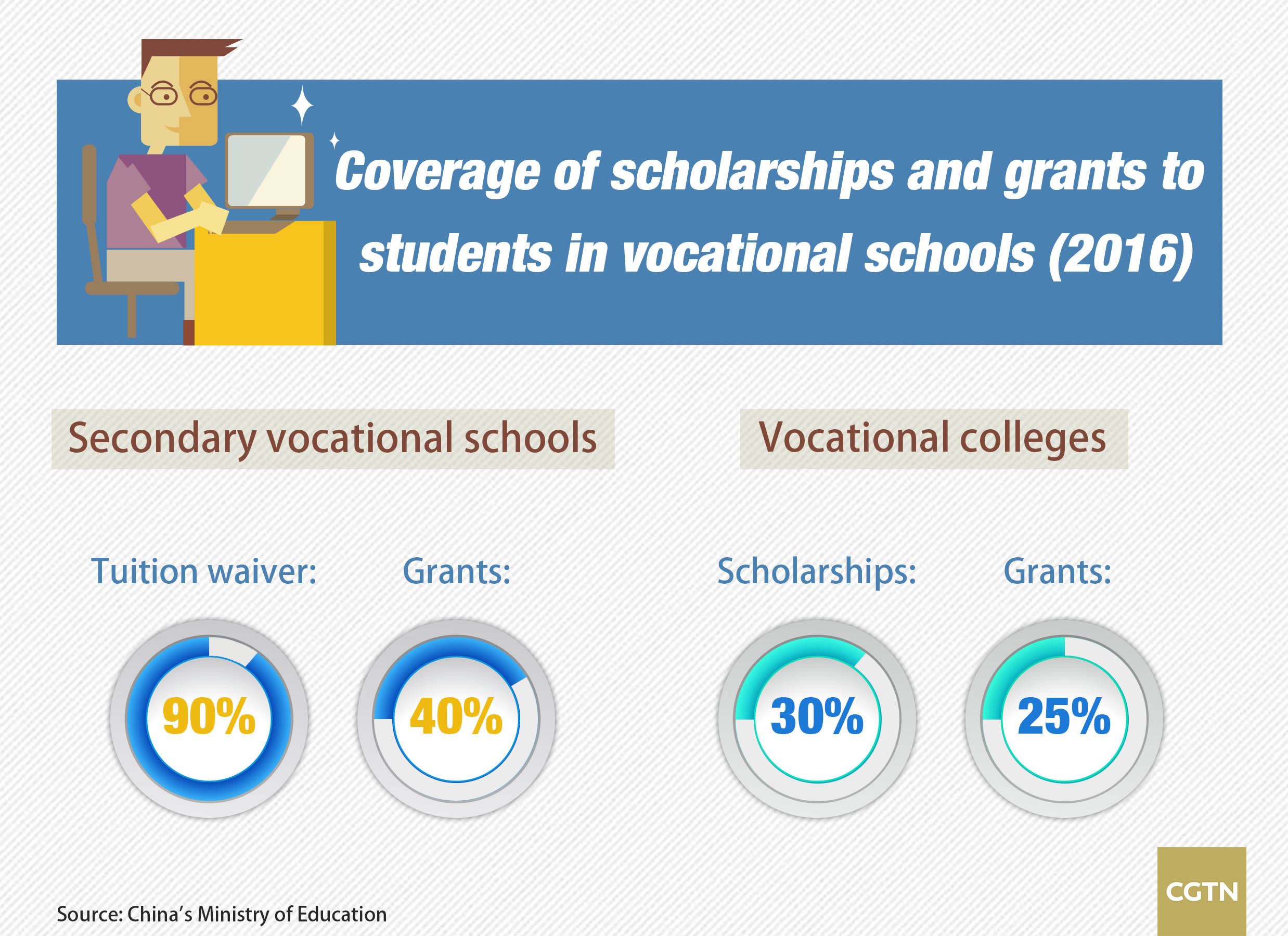China builds world's largest vocational education system
2017-05-05 14:57 GMT+8

Editor
Zhao Hong
Zheng Hao, a graduate from Xihu Secondary Vocational School in Hangzhou city, Zhejiang Province, spent two years at school mastering practical skills required in the workplace, and then interned at a local decoration company in his senior year.
Three years after he graduated, he became an assistant general manager in the engineering department. He was proud that the school he attended had offered him what he needed to get job-ready.
That's how vocational schools work in China. The school modernizes curriculums closely connected to the job market and provides hands-on experience to students.

Students and their parents sign up for vocational schools at an enrollment fair. /VCG Photo
In 2016, 9,307,800 students like Zheng enrolled into technical and vocational schools, reported China's Ministry of Education on Thursday. There were 12,300 vocational schools, and the total number of students attending them reached 26,802,100.
Those vocational schools provide nearly 1,000 majors, almost covering all areas of the national economy. The employment of graduates from secondary vocational schools remained above 95 percent in 2016, while the employment of those who have graduated from vocational institutes at tertiary level for over half a year exceeded 90 percent.

Besides, almost 70 percent of graduates from vocational schools chose to work in the local community. They became the main force to support the development of small and medium enterprises and regional industries.
Wang Jiping, head of the department of vocational education and adult education, said at the report release on Thursday that China has established the world's largest vocational education system. Secondary vocational schools and vocational institutes at tertiary level have taken up half of high school and higher education. Every year, nearly three million households send their children into vocational education.
China's vocational education funding has increased significantly in recent years, with the improvement of school conditions. In 2015, government funding reached 295 billion yuan (43 billion US dollars), increasing by 149 billion yuan in five years, with an average annual growth of 15.1 percent.

The funding system for financially-challenged students has been enhanced as well. Tuition waivers and grants were offered to over 90 percent and 40 percent of vocational high school students respectively. Scholarships were provided to nearly 30 percent of students in vocational college, and grants to 25 percent.

China's national vocational education week will take place from May 8 to 14.
Copyright © 2017
